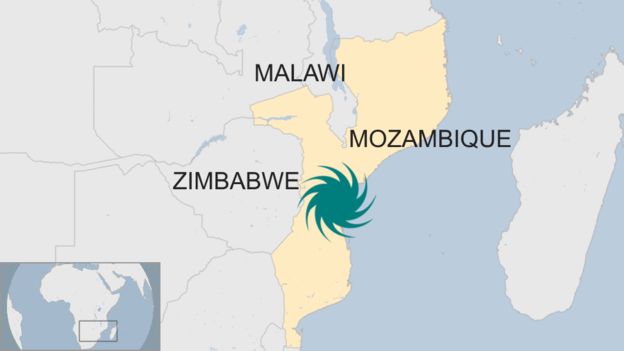After Cyclone Idai hit the African countries week ago, death toll has risen above 750 in the three southern countries. Workers try to restore electricity and water and prevent an outbreak of cholera.
In Mozambique the number of dead has risen to 446, with 259 dead in Zimbabwe and at least 56 dead in Malawi.
All numbers for deaths are still preliminary, said Mozambique’s environment minister, Celso Correia. As flood waters recede and more bodies are discovered, the final death toll in Mozambique alone could be above the early estimate of 1,000 made by the country’s president a few days after the cyclone hit, said aid workers.
Nearly 110,000 people are now in camps. As efforts to rescue people trapped by the floods wind down, aid workers across the region are bracing for the spread of disease, including cholera and malaria.
Helicopters and boats have been used to rescue some people stranded for days on rooftops and in trees. Some survivors have been digging through rubble with their hands to search for loved ones, while government and aid agencies have been flying in help.
Correia told reporters that they would have cholera and malaria. It’s unavoidable in this situation, so the government is opening a cholera treatment centre already.
The International Committee of the Red Cross said it had recorded some cases of cholera so far but the UN was unable to confirm the reports.
Sebastian Rhodes Stampa, of the UN Office for the Coordination of Humanitarian Affairs (OCHA), said the humanitarian situation was gradually improving. “Every day the water recedes we reach more people. Every day the roads open we have better access and we can deliver at more volume and that is the important thing here.”
He said two large field hospitals and water purification systems were on their way, joining a wide-ranging effort that includes drones to scout out areas in need across the landscape of central Mozambique.
The scale of the devastation was “extraordinary”, he said, not only because of the cyclone and flooding but because the land had already had been saturated by earlier rains.
Much of the area of Mozambique hit by the cyclone remains disconnected from electricity supplies, complicating rescue efforts.
As many as 109,000 people are living in shelters across central Mozambique, many of them located in and around Beira.
Those shelters also run the risk of infectious disease such as diarrhoeal disease and measles. Further, as many families have lost everything, some sleeping in the open, the risk of pneumonia, particularly among children increases considerably.
Also there is a need to help people living with HIV/AIDS to resume treatment as soon as possible in the Sofala, which has one of the highest rates of HIV infection in Mozambique.



